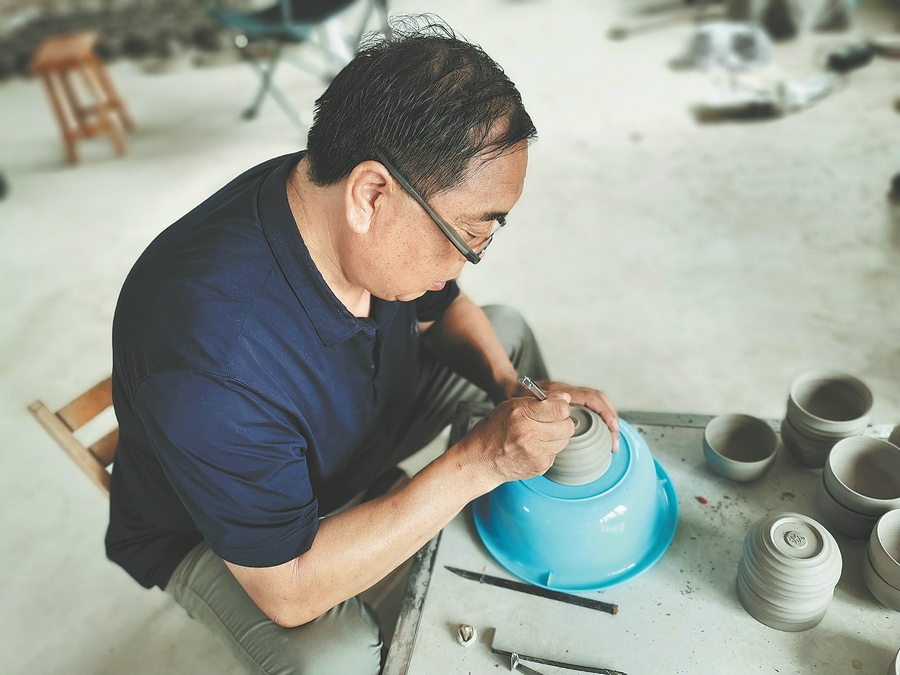Mastering an ancient art


Inheriting a legacy
Wang was on the scene when the big ancient kiln site was unearthed and was stunned by the large quantity of porcelain shards. "Most of them had an azure glaze," he recalls.
Driven by his fascination with porcelain, he viewed the archaeologists as teachers and voluntarily helped with their work.
"In my childhood, children in the village used to dig into the ground in search of porcelain shards for fun," Wang says, adding that he took some home in the 1970s.
He would carefully listen to what the experts said about these precious artifacts and study their characteristics. He would also pick up discarded items, such as agate beads and cow bones. He wouldn't even miss the seemingly ordinary clays from the archaeological site.
"I tried to sift through them and figure out their relationship with porcelain wares, such as how they influenced their glaze color," he says.
After the first archaeological team left, Wang stayed behind and kept going around the neighborhood. That was when he realized a part of him had left with the team.
The excavated porcelain and experts' explanations fueled his curiosity toward Ru porcelain wares, a treasure in his very own neighborhood. He was motivated to come up with an ambitious plan: creating porcelain items that shine with the same stunning color as their ancient predecessors.
In 1987, Wang began learning the art of porcelain-making from experienced artisans at the county's purple clay factory. He started with material selection and went on to study kneading, shaping, glazing and firing skills, which laid a solid foundation for his craftsmanship before he got started on learning to make Ru porcelain.
"I believed that since the Ru porcelain kiln site sits at Qingliangsi, most of the raw materials must be nearby," he says. "So, I rode my motorcycle, with plenty of food packed, to search everywhere, and I traveled across mountains in a radius of about 200 kilometers."
Wang climbed the mountains to collect the materials, even injuring his waist and legs in the process. The raw materials for firing Ru porcelain, including gangue and glaze, were all sourced from these trips to the local mountains.
He then carried miscellaneous specimens to research facilities in Zhengzhou, capital of Henan province, and Beijing for analysis. From the data, Wang started to sort out possible methods for creating the special glazed porcelain.
After collecting enough information, Wang started to try his hand in firing Ru porcelain in his homebuilt kiln in 1998.
He experimented with more than 400 types of raw materials, making a record of each of the thousands of firing sessions and setbacks, eventually overcoming various challenges, such as combining the sky blue glaze with the porcelain body in 2000.
Wang still remembers his excitement on seeing his first successful work, a meter-long, azure-glazed implement for rinsing brushes.
"It was like seeing my newborn son," he says.
























